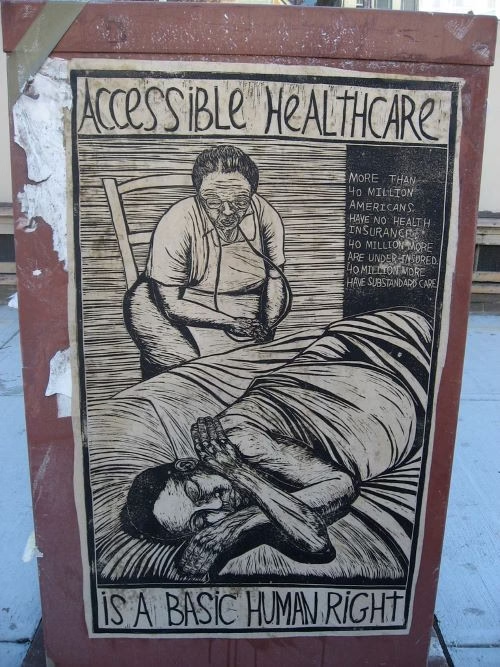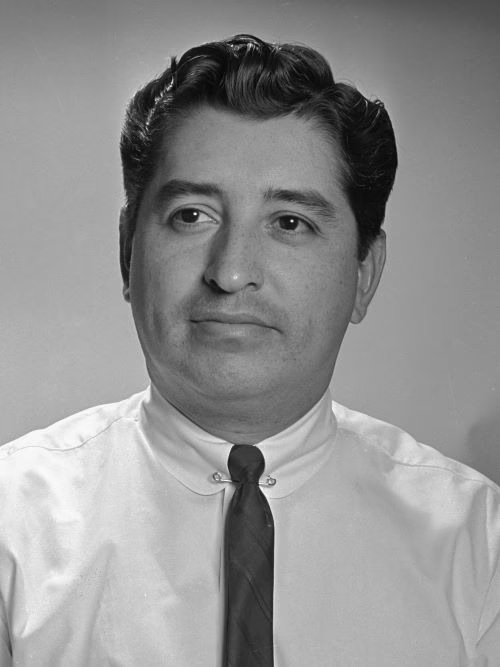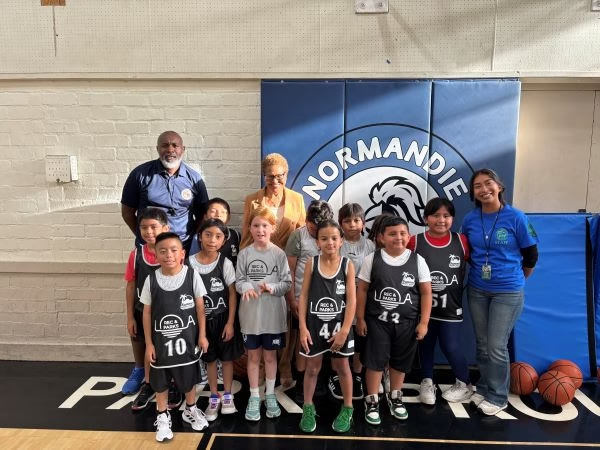Mischa Geracoulis
https://www.projectcensored.org/hidden-costs-big-data-surveillance-complex/
Unbeknownst to much of the public, Big Tech exacts heavy tolls on public health, the environment, and democracy. The detrimental combination of an unregulated tech sector, pronounced rise in cyberattacks and data theft, and widespread digital and media illiteracy—as noted in myprevious Dispatchon Big Data’s surveillance complex—is exacerbated by legacy media’s failure to inform the public of these risks. While establishment news outlets cover major security breaches in Big Tech’s troves of personal identifiable information (PII) and their costs to individuals, businesses, and national security, this coverage fails to address the negative impacts of Big Tech on the full health of our political system, civic engagement, and ecosystems.
Marietje Schaake, an AI Policy fellow at Stanford University’s Institute for Human-Centered AI Policy,arguesthat Big Tech’s unrestrained hand in all three branches of the government, the military, local and national elections, policing,workplace monitoring, and surveillance capitalism undermine American society in ways the public has failed to grasp. Indeed, little in the corporate press helps the public understand exactly how data centers—the facilities that process and store vast amounts of data—do more than endanger PII. Greenlitby the Trump administration, data centers accelerate ecosystem harms through their unmitigated appropriation of natural resources, includingwater, and the subsequent greenhouse gas emissions that increaseambient pollutionand its attendant diseases.
Adding insult to the public’s right to be informed, corporate news rarely sheds light on how an ethical, independent press serves the public good and functions to balance power in a democracy. A2023 civics pollby the University of Pennsylvania’s Annenberg School found that only a quarter of respondents knew that press freedom is a constitutional right and a counterbalance to the powers of government and capitalism. Thegutting of local newsin favor of commercial interests has only accelerated this knowledge blackout.
The demand for AI by corporatists,military AI venture capitalists, and consumers—and resultant demand for data centers—is outpacing utilities infrastructure, traditional power grid capabilities, and the renewable energy sector. Big Tech companies, such as Amazon and Meta, strain municipal water systems andregional power grids,reducing the capacity to operate all things residential and local. InNewton County, Georgia,for example, Meta’s $750 million data center, which sucks up approximately 500,000 gallons of water a day, has contaminated local groundwater and caused taps in nearby homes to run dry. What’s more,the AI boomcomes at a time when hot wars are flaring and global temperatures are soaring faster than scientists once predicted.
Constant connectivity,algorithms, and AI-generated content delude individual internet and device users into believing that they’re well informed. However, the decline of civics awareness in the United States—compounded by rampant digital and media illiteracy, ubiquitous state and corporate surveillance, and lax news reporting—makes for an easily manipulated citizenry, asserts attorney and privacy expert,Heidi Boghosian. This is especially disconcerting given the creepingspread of authoritarianism, smackdown oncivil liberties, and surging demand for AI everything.
Open [but not transparent] AI
While the companies that develop and deploy popular AI-powered tools lionize the wonders of their products and services, they keep hidden theunsustainable impactson our world. To borrow from Cory Doctorow, the “enshittification” of the online economy traps consumers, vendors, and advertisers in “the organizing principle of US statecraft,” as well as by more mundane capitalist surveillance. Without government oversight or a Fourth Estate to compel these tech corporations to reveal their shadow side, much of the public is not only in the dark but in harm’s way.
At the most basic level, consumers should know that OpenAI, the company that owns ChatGPT,collectsprivate data and chat inputs, regardless of whether users are logged in or not. Any time users visit or interact with ChatGPT, their log data (the Internet Protocol address, browser type and settings, date and time of the site visit, and interaction with the service), usage data (time zone, country, and type of device used), device details (device name and identifiers, operating system, and browser used), location information from the device’s GPS, and cookies, which store the user’s personal information, are saved. Most users have no idea that they canopt out.
OpenAI claims it saves data only for “fine-tuning,” a process of enhancing the performance and capabilities of AI models, andfor human review“to identify biases or harmful outputs.” OpenAI also claims not to use data for marketing and advertising purposes or to sell information to third parties without prior consent. Most users, however, are as oblivious to the means of consent as to the means of opting out. This is by design.
In July, theUS Court of Appealsfor the Eighth Circuit vacated the Federal Trade Commission’s“click-to-cancel” rule, which would have made online unsubscribing easier. The ruling would have covered all forms ofnegative option marketing—programs that give sellers free reign to interpret customer inaction as “opting in,” consenting to subscriptions and unwittingly accruing charges. Director of litigation at the Electronic Privacy Information Center, John Davisson,commentedthat the court’s decision was poorly reasoned, and only those with financial or career advancement motives would argue in favor of subscription traps.
Even if OpenAI is actually protective of the private data it stores, itis not above disclosinguser data to affiliates, law enforcement, and the government. Moreover, ChatGPT practices are noncompliant with the EU’sGeneral Data Protection Regulation(GDPR), the global gold standard of data privacy protection. Although OpenAI says it strips PII and anonymizes data, its practice of “indefinite retention” does not comply with the GDPR’s stipulation for data storage limitations, nor does OpenAI sufficiently guarantee irreversible data de-identification.
As science and tech reporter Will KnightwroteforWired, “Once data is baked into an AI model today, extracting it from that model is a bit like trying to recover the eggs from a finished cake.” Whenever a tech company collects and keeps PII, there are security risks. The more data captured and stored by a company, the more likely it will be exposed to a system bug, hack, or breach, such as theChatGPT breachin March 2023.
OpenAI has saiditwillcomplywith theEU’s AI Code of Practicefor General-Purpose AI, which aims to foster transparency, information sharing, and best practices for model and risk assessment among tech companies. Microsoft hassaidthat it will likely sign on to compliance, too; while Meta, on the other hand,flatly refusesto comply, much like it refuses to abide by environmental regulations.
To no one’s surprise, the EU code has alreadybecome politicized, and the White House has issued its ownAI Action Planto “remove red tape.” The plan also purports to remove “woke Marxist lunacyin the AI models,” eliminating such topics as diversity, equity, and inclusion and climate change. As Trumpcrusades againstregulation and “bias,” the White House-allied Meta decriespolitical concernsover compliance with the EU’s AI code. Meta’s claim is coincidental; British Courts, based on the United Kingdom’s GDPR obligations,ruled thatanyone in a country covered by the GDPR has theright to requestMeta to stop using their personal data for targeted advertising.
Big Tech’s open secrets
Information on the tech industry’s environmental and health impacts exists,attestsartificial intelligence researcher Sasha Luccioni. The public is simply not being informed. Thislack of transparency, warns Luccioni,portends significantenvironmental andhealth consequences. Too often, industry opaqueness is excused by insiders as “competition” to which they feel entitled, or blamed on the broad scope ofartificial intelligenceproducts and services—smart devices, recommender systems, internet searches, autonomous vehicles, machine learning, the list goes on. Allegedly, there’s too much variety to reasonably quantify consequences.
Those consequencesarequantifiable, though. While numbers vary and are on the ascent, there are at least 3,900 data centers in theUnited Statesand10,000 worldwide. An average data center houses complex networking equipment, servers, and systems for cooling systems, lighting, security, and storage, all requiring copious rare earth minerals,water, and electricity to operate.
The densest data center area exists in Northern Virginia, just outside the nation’s capital. “Data Center Alley,” also known as the “Data Center Capital of the World,” has the highest concentration of data centers not only in the United States but in the entire world, consuming millions of gallons of water every day. International hydrologist Newsha Ajami has documented how water shortages around the world are being worsened by Big Data. For tech companies, “water is an afterthought.”
Powered by fossil fuels, these data centers pose serious public health implications. According to research in 2024, training one large language model (LLM)with 213 million parametersproduced 626,155 pounds of CO2 emissions, “equivalent to the lifetime emissions of five cars, including fuel.”Stated another way, such AI training “can produce air pollutants equivalent to more than 10,000 round trips by car between Los Angeles and New York City.”
Reasoning modelsgenerate more “thinking tokens” and use as much as50 percent moreenergy than other AI models. Google andMicrosoftsearch features purportedly use smaller models when possible, which, theoretically, can provide quick responses with less energy. It’s unclear when or if smaller models are actually invoked, and the bottom line, explained climatereporter Molly Taft, is that model providers are not informing consumers that speedier AI response times almost always equate to higher energy usage.
Profits over people
AI is rapidly becominga public utility, profoundly shaping society, surmise Caltech’sAdam Wierman and Shaolei Renof the University of California, Riverside. In the last few years, AI has outgrown its niche in the tech sector to become integral to digital economies, government, and security. AI has merged more closely with daily life, replacing human jobs and decision-making, and has thus created a reliance on services currently controlled by private corporations. Because other essential services such as water, electricity, and communications are treated as public utilities, there’s growing discussion about whetherAIshould be regulated under a similar public utility model.
That said,data centers needpower grids, most of which depend on fossil fuel-generated electricity that stresses national and global energy stores. Data centers also need backup generators for brownout and blackout periods. With limited clean, reliable backup options, despite the known environmental and health consequences of burning diesel, diesel generators remain the industry’s go-to.
Whether the public realizes it or not, the environment and citizens are being polluted by the actions of private tech firms. Outputs from data centers inject dangerous fine particulate matter andnitrogen oxides(NOx) into the air, immediately worsening cardiovascular conditions, asthma, cancer, and even cognitive decline, caution Wierman and Ren. Contrary to popular belief, air pollutants are not localized to theiremission sources. And, althoughchemically different, carbon (CO2) is not contained by location either.
Of great concern is that in “World Data Capital Virginia,” data centers are incentivized withtax breaks. Worse still, the (misleadingly named) Environmental Protection Agency plans to remove all limits on greenhouse gas emissions from power plants, according to documents obtained by theNew York Times. Thus, treating AI and data centers as public utilities presents adouble-edged sword. Can a government that slashes regulations to provide more profit to industry while destroying its citizens’ health along with the natural world be trusted to fairly price and equitably distribute access to all? Would said government suddenly start protecting citizens’ privacy and sensitive data?
The larger question, perhaps, asks if the US is truly a democracy. Or is it atechnogarchy, or anAI-tocracy? The 2024 AI Global Surveillance (AIGS) Indexrankedthe United States first for its deployment of advanced AI surveillance tools that “monitor, track, and surveil citizens to accomplish a range of objectives— some lawful, others that violate human rights, and many of which fall into a murky middle ground,” theCarnegie Endowmentfor International Peace reported.
Surveillance has long been the purview of authoritarian regimes, but in so-called democracies such as the United States, the scale and intensity of AI use is leveraged both globally through military operations and domestically to target and surveil civilians. In cities such as Scarsdale, New York, andNorfolk, Virginia, citizens are beginning to speak out against the systems that are “immensely popularwith politicians and law enforcement, even though they do real and palpable damage to the citizenry.”
Furthermore, tracking civilians to “deter civil disobedience” has never been easier, evidenced in June by the rapid mobilization ofboots on the groundamid the peaceful protests of ICE raids in Los Angeles. AI-powered surveillance acts as the government’s “digital scarecrow,” chilling the American tradition and First Amendment right to protest and the Fourth Estate’s right to report.
The public is only just starting to become aware of algorithmic biases inAI training datasetsand their prejudicial impact on predictive policing, orprofiling, algorithms, and other analytic tools used by law enforcement. City street light and traffic light cameras, facial recognition systems, video monitoring in and around business and government buildings, as well as smart speakers,smart toys, keyless entry locks, automobile intelligent dash displays, and insurance antitheft tracking systems are all embedded with algorithmic biases.
Checking Big Tech’s unchecked power
Given the level and surreptitiousness of surveillance, the media are doubly tasked with treading carefully to avoid being targeted and accurately informing the public’s perception of data collection and data centers. Reporting that glorifies techbros and AI is unscrupulous and antithetical to democracy: In an era where billionaire techbros and wanna-be-kings are wielding every available apparatus of government and capitalism to gatekeep information, the public needs an ethical press committed toseekingtruth, reporting it, and criticallycoveringhow AI is shifting power.
If people comprehend what’s at stake—their personal privacy and health, the environment, and democracy itself—they may be more inclined to make different decisions about their AI engagement and media consumption. An independent press that prioritizes public enlightenment means that citizens and consumers still have choices, starting with basic data privacy self-controls that resist AI surveillance and stand up for democratic self-governance.
Just as a healthy environment, replete with clean air and water, has beendeclared a human rightby the United Nations, privacy is enshrined inArticle 12of the Universal Declaration of Human Rights. Although human rights are subject to national laws, water, air, and the internet know no national borders. It is, therefore, incumbent upon communities and the press to uphold these rights and to hold power to account.
This spring, residents of Pittsylvania County, Virginia, did just that. Thanks to independent journalism and civic participation, residents pushed back against the corporate advertising meant to convince the county that the fossil fuels powering the region’s data centers are “clean.” Propagandistic campaigns were similarly applied in Memphis, Tennessee, where proponents of Elon Musk’s data center—which has the footprint of thirteen football fields—circulated fliers to residents of nearby, historically Black neighborhoods, proclaiming the super-polluting xAIhas low emissions. “Colossus,” Musk’s name for what’s slated to be theworld’s biggest supercomputer, powers xAI’sHitler-loving chatbot Grok.
The Southern Environmental Law Center exposed with satellite and thermal imagery how xAI, which neglected to obtain legally required air permits, brought in at least35 portable methane gas turbinesto help power Colossus. Tennessee reporter Ren Brabenecsaidthat Memphis has become a sacrifice zone and expects the communities there to push back.
Meanwhile, in Pittsylvania, Virginia, residents succeeded in halting the proposed expansion of data centers that would damage the region’s environment and public health. Elizabeth Putfark, attorney with the Southern Environmental Law Center,affirmedthat communities, including local journalists, are a formidable force when acting in solidarity for the public welfare.
Best practices
Because AI surveillance is a threat to democracies everywhere, we must each take measures to counter “government use of AI for social control,” contendsAbi Olvera, senior fellow with the Council on Strategic Risks. Harlo Holmes, director of digital security at the Freedom of the Press Foundation, toldWiredthat consumers must make technology choices under the premise that they’re our “last line of defense.” Steps to building that last line of defense include digital and media literacies and digital hygiene, and at least a cursory understanding of how data is stored and its far-reaching impacts.
Best defensive practicesemployedby media professionals can also serve as best practices for individuals. This means becoming familiar with laws and regulations, taking every precaution to protect personal information on the internet and during online communications, and engaging in responsible civic discourse. A free and democratic society is only as strong as its citizens’ abilities to make informed decisions, which, in turn, are only as strong as their media and digital literacy skills and the quality of information they consume.













